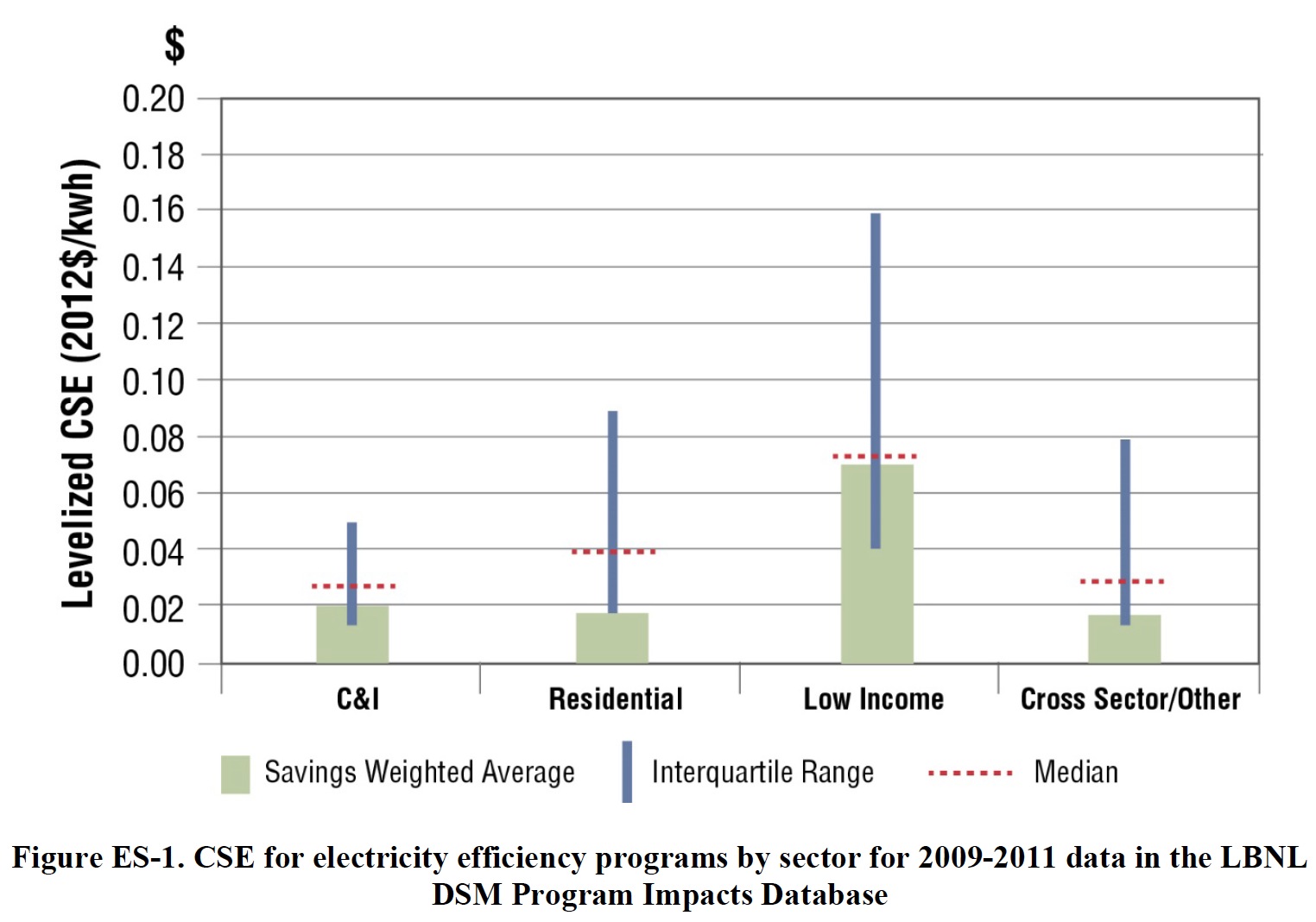ERNEST ORLANDO LAWRENCE BERKELEY NATIONAL LABORATORY
Executive Summary
End-use energy efficiency is increasingly being relied upon as a resource for meeting electricity and natural gas utility system needs within the United States. There is a direct connection between the maturation of energy efficiency as a resource and the need for consistent, high-quality data and reporting of efficiency program costs and impacts. To support this effort, LBNL initiated the Cost of Saved Energy Project (CSE Project) and created a Demand-Side Management (DSM) Program Impacts Database to provide a resource for policy makers, regulators, and the efficiency industry as a whole.
This study is the first technical report of the LBNL CSE Project and provides an overview of the project scope, approach, and initial findings, including:
- Providing a proof of concept that the program-level cost and savings data can be collected, organized, and analyzed in a systematic fashion;
- Presenting initial program, sector, and portfolio level results for the program administrator CSE for a recent time period (2009-2011); and
- Encouraging state and regional entities to establish common reporting definitions and formats that would make the collection and comparison of CSE data more reliable.
The LBNL DSM Program Impacts Database includes the program results reported to state regulators by more than 100 program administrators in 31 states, primarily for the years 2009–2011. In total, we have compiled cost and energy savings data on more than 1,700 programs over one or more program-years for a total of more than 4,000 program-years’ worth of data, providing a rich dataset for analyses. We use the information to report costs-per-unit of electricity and natural gas savings for utility customer-funded, end-use energy efficiency programs. The program administrator CSE values are presented at national, state, and regional levels by market sector (e.g., commercial, industrial, residential) and by program type (e.g., residential whole home programs, commercial new construction, commercial/industrial custom rebate programs).
In this report, the focus is on gross energy savings and the costs borne by the program administrator—including administration, payments to implementation contractors, marketing, incentives to program participants (end users) and both midstream and upstream trade allies, and evaluation costs. We collected data on net savings and costs incurred by program participants. However, there were insufficient data on participant cost contributions, and uncertainty and variability in the ways in which net savings were reported and defined across states (and program administrators). As a result, they were not used extensively in this report. It is also important to note that savings metrics reported by program administrators draw heavily from estimated values.
|
Program administrator costs include administrative, education, marketing and outreach, and evaluation, measurement and verification (EM&V) costs as well as financial incentives paid to customers or contractors. The CSE values exclude participant costs, and program administrator performance incentives, and, thus, do not represent the total resource cost unless indicated otherwise. Program savings are based on claimed gross savings reported by the program administrator unless indicated otherwise. For program administrators that only reported net savings values, we calculated gross savings values using net-to-gross ratios if those were available from the program administrator. Savings values are also based on savings at the end-use site and not at the power plant or natural gas pumping station and thus do not account for transmission and distribution losses. |
Lifetime energy savings, when not reported by the program administrator, were calculated per the protocol described in Chapter 2. Cost of First-Year Energy Savings (First-Year CSE): The cost of acquiring a single year of annualized incremental energy savings through actions taken through a program/sector/portfolio. The cost of efficiency as a function of first-year energy savings may be useful for program design or budgeting to meet incremental annual savings targets. Levelized Cost of Lifetime Energy Savings (Levelized CSE): The cost of acquiring energy savings that accrue over the economic lifetime of the actions taken through a program/sector/ portfolio, amortized over that lifetime and discounted back to the year in which the costs are paid and the actions are taken. |
About the Ernest Orlando Lawrence Berkeley National Laboratory
www.lbl.gov
Berkeley Lab is a member of the national laboratory system supported by the U.S. Department of Energy through its Office of Science. It is managed by the University of California (UC) and is charged with conducting unclassified research across a wide range of scientific disciplines.
Tags: Berkeley Laboratory, CA, California, Ernest Orlando Lawrence Berkeley National Laboratory







 RSS Feed
RSS Feed